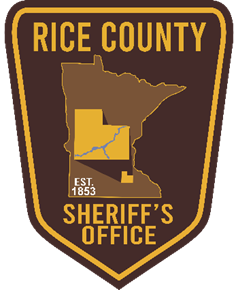Prepare a Winter Storm Plan
- Have extra blankets on hand.
- Ensure that each member of your household has a warm coat, gloves or mittens, hat, and water-resistant boots.
Assemble a Disaster Supplies Kit Containing:
- First aid kit and essential medications.
- Battery-powered NOAA Weather radio, flashlight, and extra batteries.
- Canned food and can opener.
- Bottled water (at least one gallon of water per person per day to last at least 3 days).
- Extra warm clothing, including boots, mittens, and a hat.
- Assemble a Disaster Supplies Kit for your car, too.
- Have your car winterized before winter storm season.
Stay Tuned for Storm Warnings
- Listen to NOAA Weather Radio and your local radio and TV stations for updated storm information.
Know What Winter Storm WATCHES and WARNINGS Mean
- A winter storm WATCH means a winter storm is possible in your area.
- A winter storm WARNING means a winter storm is headed for your area.
- A blizzard WARNING means strong winds, blinding wind-driven snow, and dangerous wind chill are expected. Seek shelter immediately!
When a Winter Storm WATCH is Issued
- Listen to NOAA Weather Radio, local radio, and TV stations, or cable TV such as The Weather Channel for further updates.
- Be alert to changing weather conditions.
- Avoid unnecessary travel.
When a Winter Storm WARNING is Issued
- Stay indoors during the storm.
- If you must go outside, several layers of lightweight clothing will keep you warmer than a single heavy coat. Gloves (or mittens) and a hat will prevent loss of body heat. Cover your mouth to protect your lungs.
- Understand the hazards of wind chill, which combines the cooling effect of wind and cold temperatures on exposed skin.
- As the wind increases, heat is carried away from a person’s body at an accelerated rated, driving down the body temperature.
- Walk carefully on snowy, icy, sidewalks.
- After the storm, if you shovel snow, be extremely careful. It is physically strenuous work, so take frequent breaks. Avoid overexertion.
- Avoid traveling by car in a storm, but if you must…
- Carry a Disaster Supply Kit in the trunk.
- Keep your car’s gas tank full for emergency use and to keep the fuel line from freezing.
- Let someone know your destination, your route, and when you expect to arrive. If your car gets stuck along the way, help can be sent along your predetermined route.
If You Do Get Stuck
- Stay with your car. Do not try to walk to safety.
- Tie a brightly colored cloth (preferably red) to the antenna for rescuers to see.
- Start the car and use the heater for about 10 minutes every hour. Keep the exhaust pipe clear so fumes won’t back up in the car.
- Leave the overhead light on when the engine is running so that you can be seen.
- As you sit, keep moving your arms and legs to keep blood circulating and to stay warm.
- Keep one window away from the blowing wind slightly open to let in air.
What to Do After a Winter Storm
- Continue listening to local radio or television stations or a NOAA Weather Radio for updated information and instructions. Access may be limited to some parts of the community, or roads may be blocked.
- Help a neighbor who may require special assistance–infants, elderly people, and people with disabilities. Elderly people and people with disabilities may require additional assistance. People who care for them or who have large families may need additional assistance in emergency situations.
- Avoid driving and other travel until conditions have improved. Roads may be blocked by snow or emergency vehicles.
- Avoid overexertion. Heart attacks from shoveling heavy snow are a leading cause of deaths during winter.
- Follow forecasts and be prepared when venturing outside. Major winter storms are often followed by even colder conditions.
* Source American Red Cross
Learn more about preparing your home and vehicle for the winter season.
